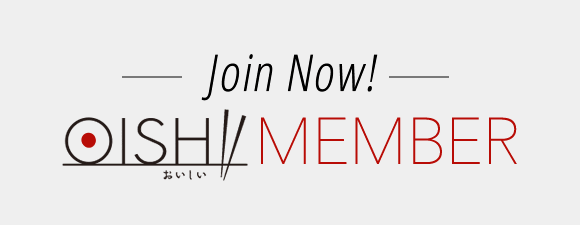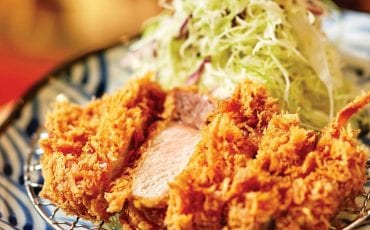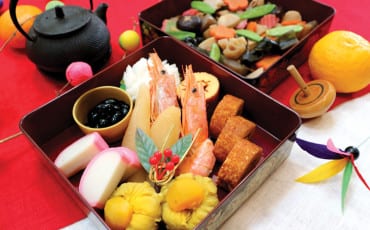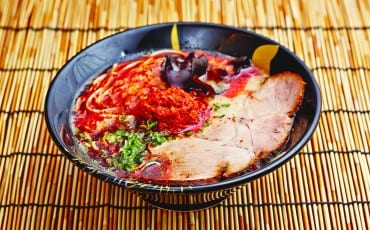- OISHII
- OISHII Wiki
- Dishes
- Kagami mochi
OISHII Wiki
Dishes
Kagami mochi
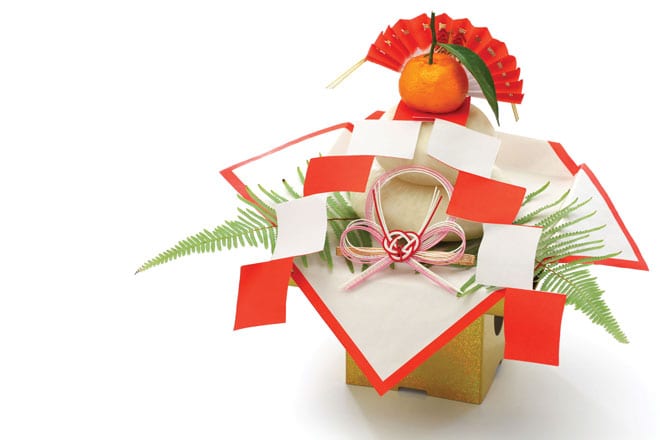
Visit just about anywhere in Japan during the New Year, and you’ll see these large, white and double-tiered rice cakes, topped with an orange-like fruit. Often, these are also adorned with ornamental paper and dried kelp or persimmons.
Many Japanese usher in the New Year by displaying these traditional Japanese New Year decorations at home. Known as kagami mochi, which literally means “mirror rice cake” after their resemblance to old Japanese copper mirrors, these fat, circular rice cakes are usually placed in a Shinto altar at home and offered to the house gods.
Kagami mochi are typically put out after Christmas before being removed on 11 January. The mochi is then broken up into smaller pieces, roasted and served in zoni (vegetable and meat soup) or shiruko (sweet azuki bean soup).
For auspicious reasons, kagami mochi is broken with hands or a hammer. It is not cut with a knife, which has negative connotations like the cutting of relationship ties. This ritual of breaking kagami mochi and eating it is called kagami biraki, and brings the New Year holidays to a close. The practice dates back to the 14th century and is thought to represent longevity, a good harvest and the blessing of ancestors.
Although some families continue this old tradition of making kagami mochi and practising kagami biraki, many people today buy ready-made or even plastic versions from supermarkets or convenience stores. Typically, the mochi will be wrapped in plastic to prevent spoilage. More modern kagami mochi sold in stores will even come packaged with pieces of small mochi already broken like in kagami biraki.
Kagami mochi is usually topped with a Japanese bitter citrus fruit, daidai. Depending on the region, it will also be decorated with umeboshi (pickled plums), shrimp, konbu (dried kelp) and dried persimmons, along with other items like traditional noshi decorative Japanese paper and, sometimes, even paper cartoon characters.

